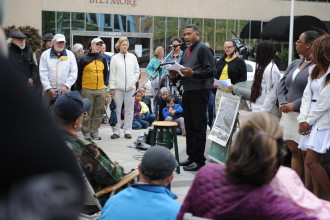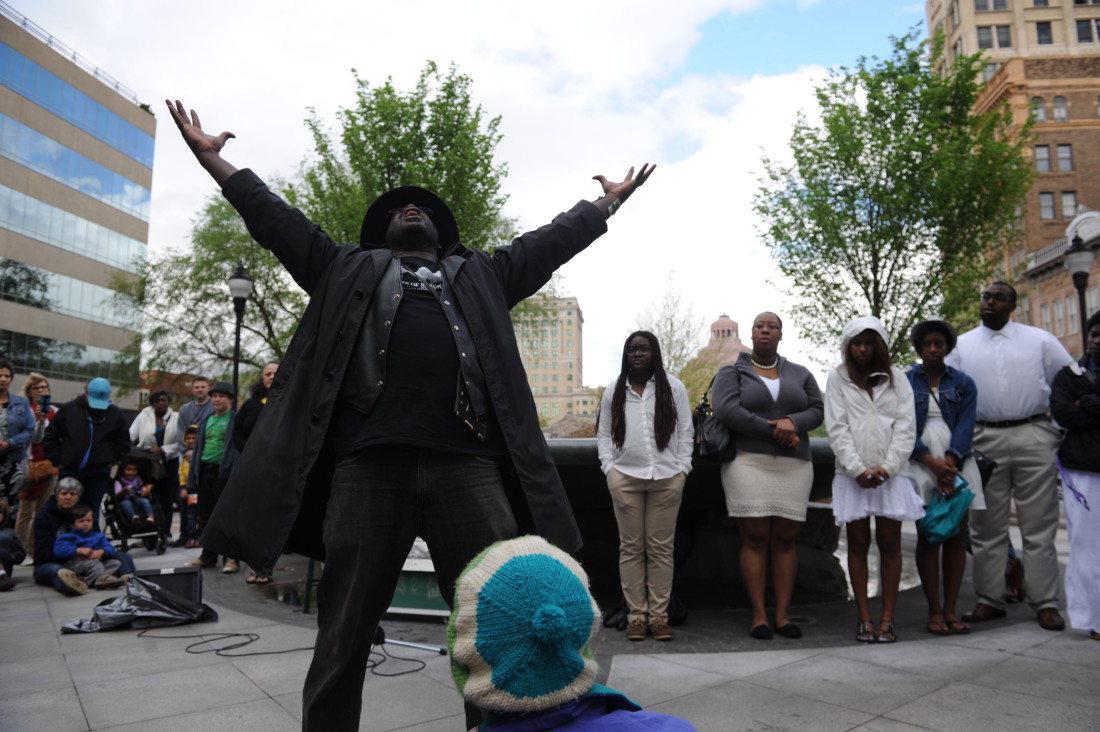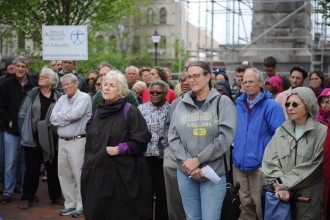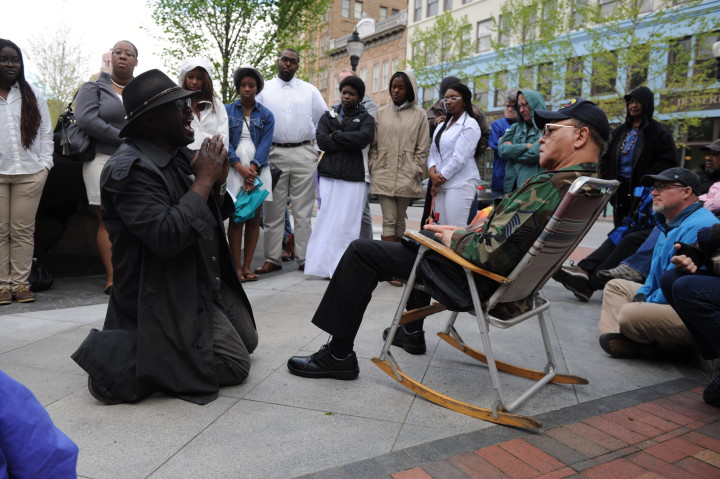“Well, they have passed quietly through — 2,700 men and numberless negroes, horses and mules which they have stolen…a great many negroes have left town with the yankees — crowds of men, women and children just gathered up a bundle of clothes and went with them.”
So reads an eyewitness account from Ms. Fannie Patton, the only surviving daughter of James W. Patton, a prominent 19th century Asheville businessman. Fannie recounted what she saw during the events in Asheville 150 years ago, from April 23-26, 1865, when the Union Army marched through, signed a truce and led hundreds of newly freed slaves along Main Street.
A remembrance at Vance Monument was organized April 26 to look back on the event, just steps away from where black men and women were sold as goods, on the steps of the Courthouse in a different era. The remembrance was co-sponsored by Date My City and the UNC Asheville Center for Diversity Education.
“None of ours have gone, as we know of yet,” wrote Patton. “John McDowell, a man belonging to me who ran away about two years ago, belonged to the negro troops who were with them. Our men talked to him and he told them that he had been in the army since he left.”

About 75 people gathered at the event had to envision a time of great unrest in the area and the entire country. The Civil War had just ended, and the South would soon enter the period of Reconstruction.
The Union Army of Gen. George Stoneman, led by Brig. Gen. Alvan Gillem, rode up to Asheville on April 23, 1865. After signing a truce with the home guard, the general led 2,700 troops and hundreds of newly freed slaves along Main Street, which is now Biltmore Avenue. As they proceeded to leave town on April 26, they were joined by newly freed slaves from Asheville who sought safe passage out of the mountains to a new life elsewhere.
“We’re not here to celebrate war or a battle won,” Sasha Mitchell told gatherers at the event. Mitchell is founder of www.colorofasheville.net, a website for connections and information within Asheville’s black community. “The events of that week are perceived differently based on people’s position in society. For the first time, people who had been enslaved claimed an unalienable right: freedom.”
The event had great significance for slaves living in the area. According to historian John Inscoe in his book, The Heart of Confederate Appalachia: Western North Carolina and the Civil War, “Stoneman’s raid had proved the single most liberating event of the war for mountain slaves, and even the slave holders not directly in the path of the Union forces had found that they had lost much control of the slaves still with them.”
Darin Waters, professor of history at UNCA, said views of the war in the South differed drastically before and after the conflict.
“Before the Civil War, southerners would readily admit the conflict was about slavery,” Waters said. “But after, they argued that it had nothing to do with slavery, setting the stage for injustice over the next hundred years.”
Mary Taylor Brown, a woman living in Asheville at the time, wrote from memory on June 20, 1865 that she saw the Union army mobilize in front of her house. Her written recollection appeared in the Vance Brown Collection at the Ramsey Library Special Collections, a copy of which was passed out at the event.
She said after the army had marched on by, she realized two of her aunt’s slave nurses had joined the army, as well as other slaves in the neighborhood. The coming change was to be profound.
“We realized it was the beginning of the general emancipation which would cause a complete revolution in our lives,” she wrote.






LOL. We are all slaves to this crony government.